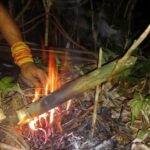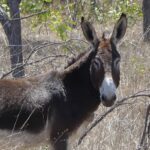Where to dig
One of the most essential techniques for finding drinkable water in Southern African natural environments is digging for water in areas that are holding water underground. These water-holding structures can be situated next to an open water source or below riverbeds where no open water is visible.
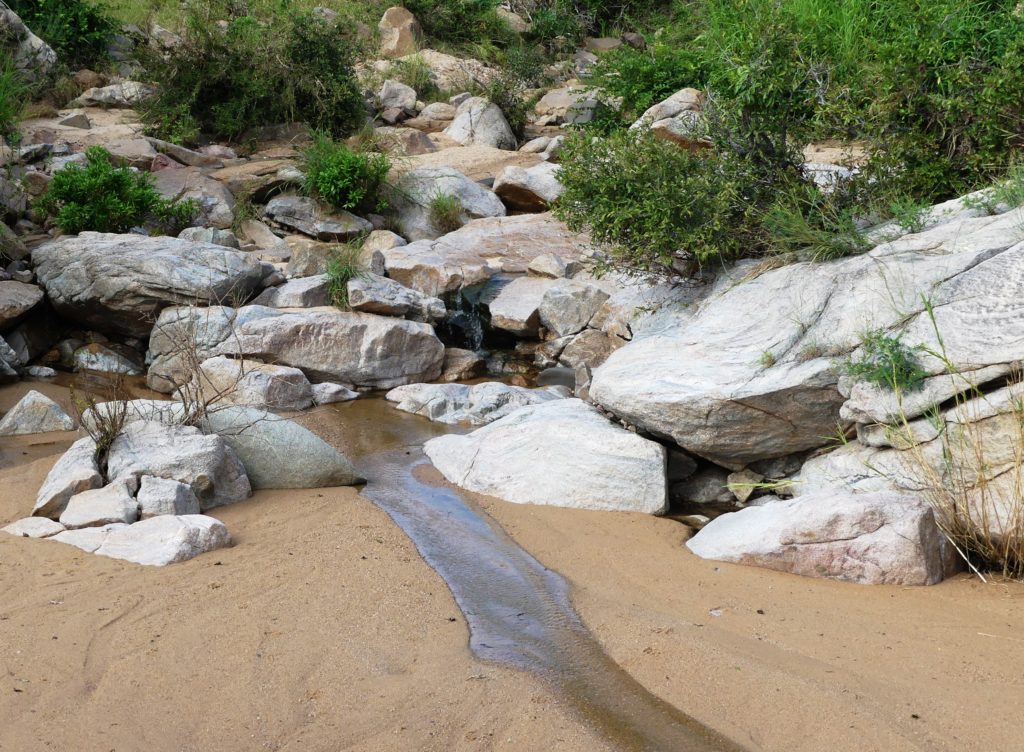
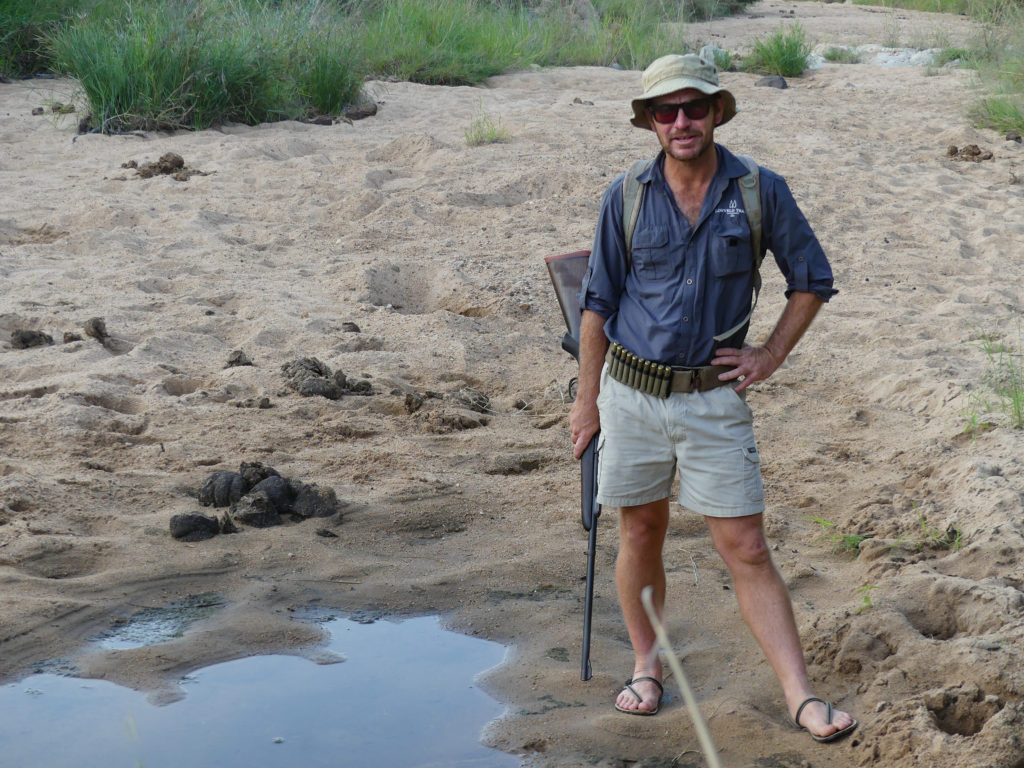
Water contamination
Water contamination can be mechanical (e.g., sediments), biological (e.g., parasites), or chemical (e.g., elevated metal ion levels).
Cloudy water – avoid dark layers of sand.
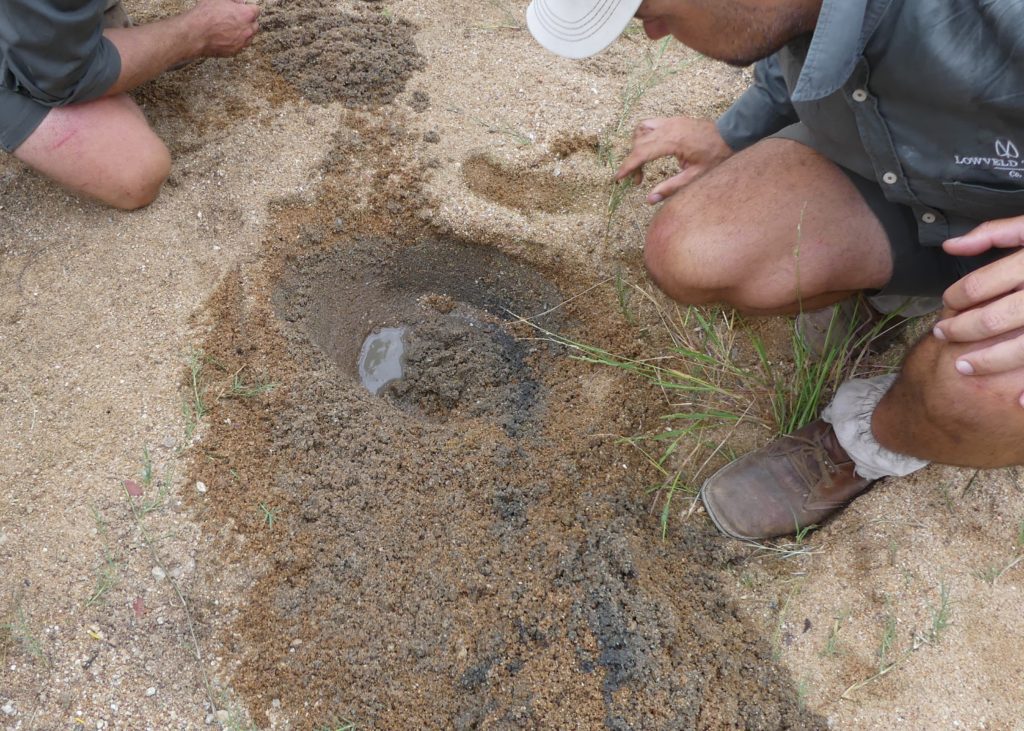
Mechanical water filtration can be done by various filtering devices or by digging a hole at least 1 m apart from the open water source at a place that contains no clay, loam, or layers with biological matter but only pure sand. Digging a depression within an existing open water source is not advisable, as biological or loamy matters are always at the bottom. As soon as these are disturbed, the water will remain cloudy for a long time. The same holds for a sandy patch containing dark layers (clay, loam, biological matter) underneath the surface. Immediately stop digging and look for a sandy patch without dark layers because this water will not turn clean that day.
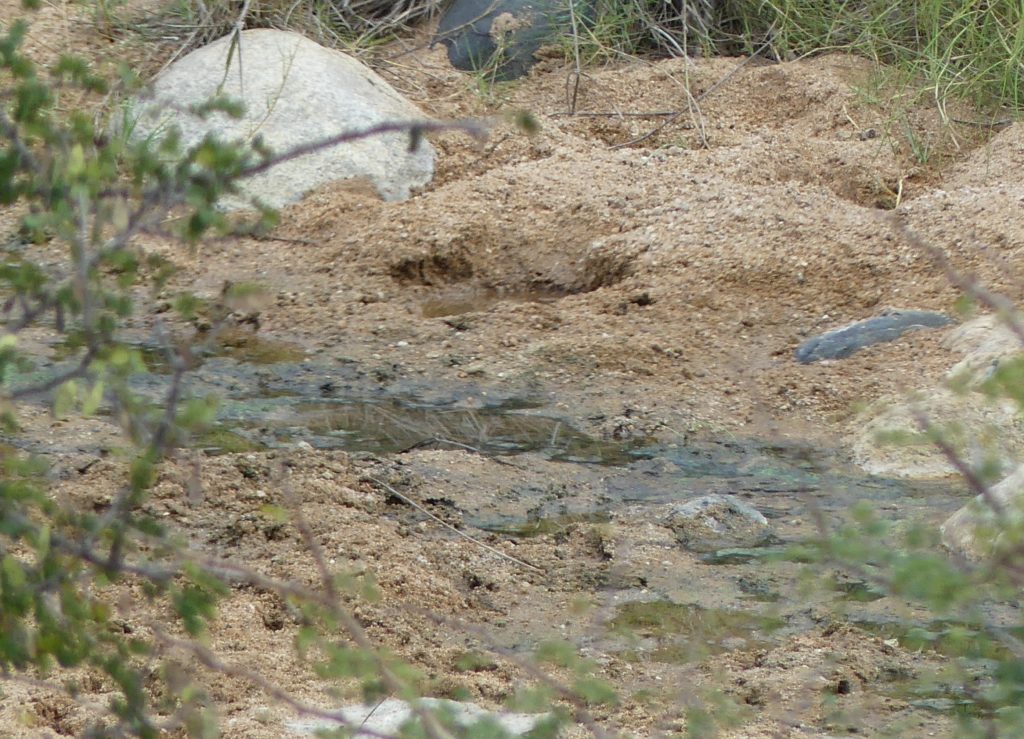
Water wells dug within silica sand, on the other hand, will contain water that turns clean very soon. Just remove the disturbed water with a cup, and the newly infiltrating water will clean up the mixture. Just clean water will remain in the dug hole within a short time.
Reducing biological hazards when digging water
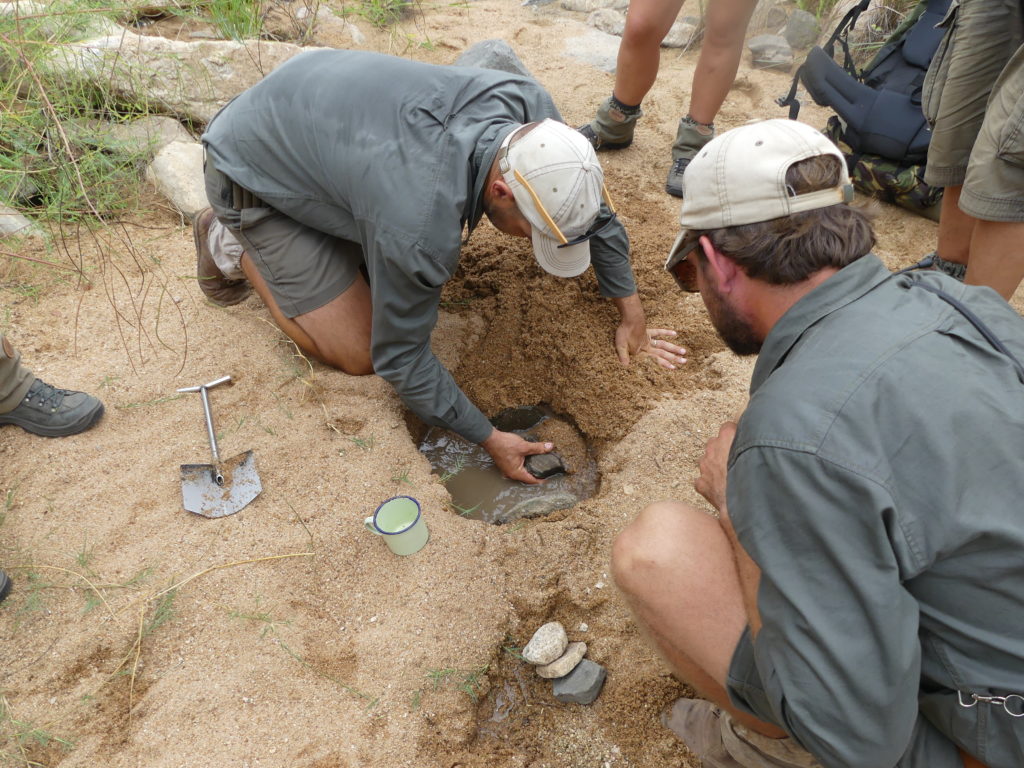
Obtaining water with reduced biological hazards is done similarly to the principles of mechanical water filtration. Most of these biological hazards, like viruses, parasitic cysts, -eggs, nematodes, and others, are concentrated within the open water sources and sediments of biological layers. The surrounding clean silica sand contains only a tiny fraction of these hazards. Therefore, digging a hole away from the open water source or within river sand drastically reduces the dangers of biological hazards. Water from such holes, therefore, can be drunk in the South African Lowveld without boiling.
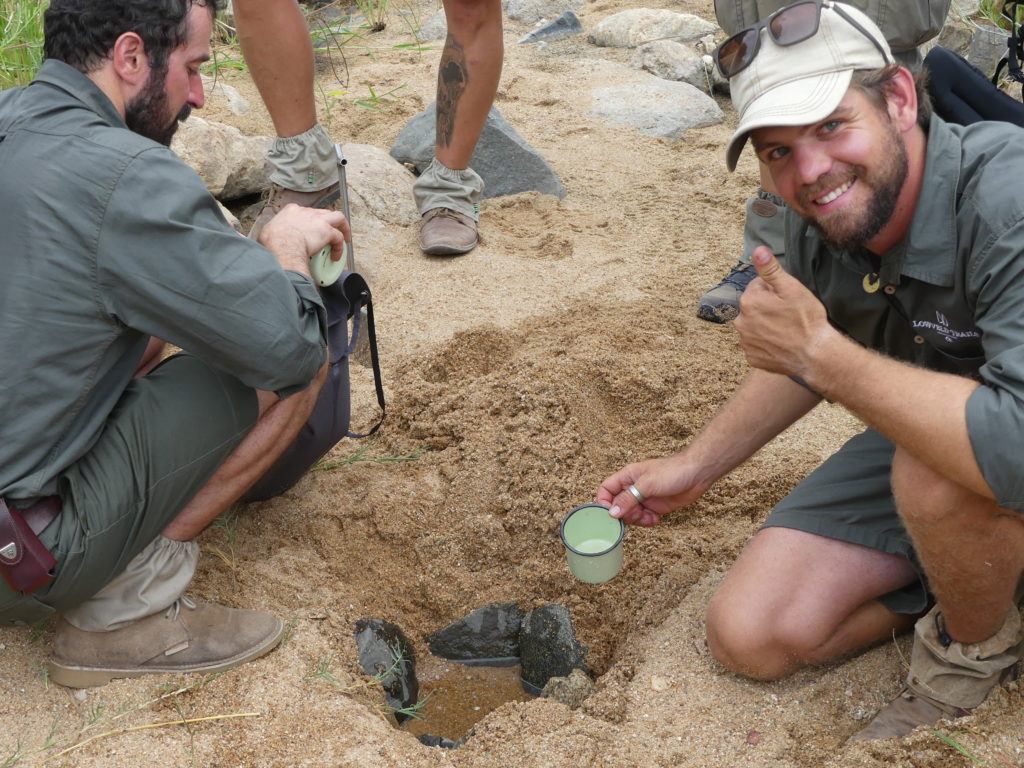
If water has to be boiled due to exposure to biological hazards and is cloudy, it should first be cleaned mechanically. A generally known sedimentation filtering device—with a layer of charcoal at the bottom—can be built, or a prefabricated device can be used.
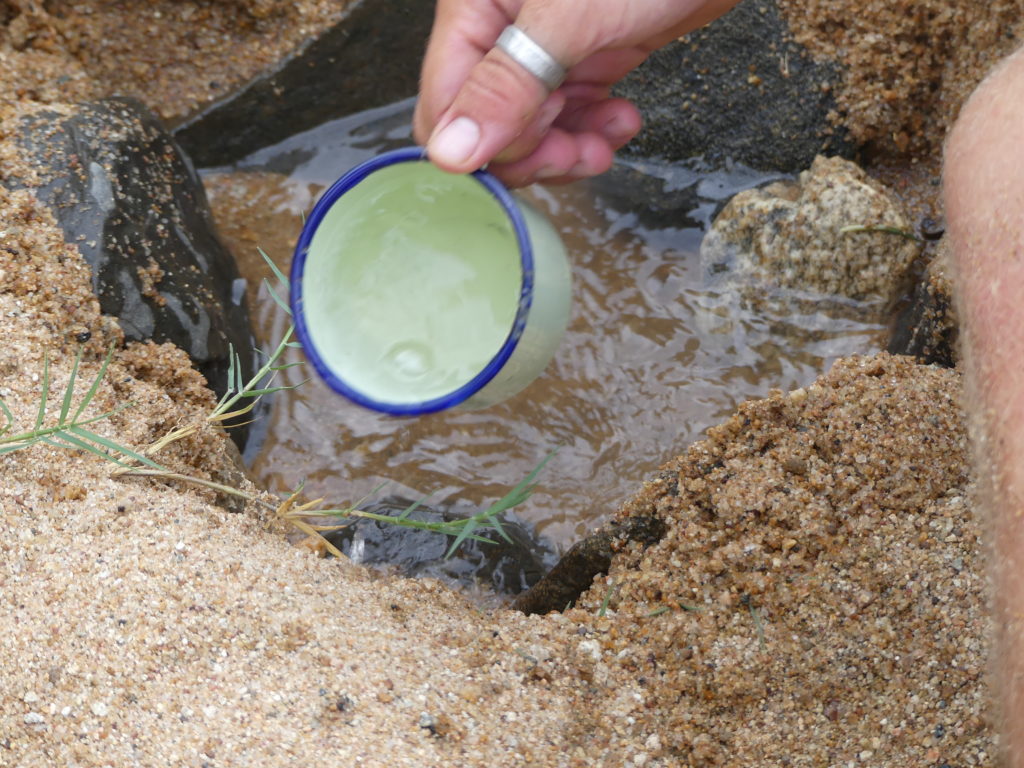
Chemical water contamination
Chemical contamination of river water can be a natural hazard in downstream areas of mines. There are no easy fixes. Just avoid using such water if it tastes metallic or sulphuric. The scenic Olifants River is one of the most polluted rivers in South Africa. Although it flows through a variety of nature reserves and game parks, its catchment area lies within the main coal mining area and the platinum mining belt. Wastewater treatment plants are working inefficiently.
Lessons learned about digging for water.
- First, consider the lay of the land at which water could be accumulated
- Elephants prefer to drink the cleanest available water. They, therefore, often dig in dry riverbeds. Which is a good indication of a low water table
- If there are dark layers in the sand – abandon the dig and start new at a place with clean sand throughout
- During the nighttime, cover the well with heavy stones so Zebras, Baboons, or other animals do not contaminate them.
.



